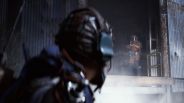In hopes that we'll all live like The Jetsons someday with our own robot maids, a group of scientists at MIT have developed new algorithms to aid household robots in recognizing objects in clutter.
In order for Rosie the Robot to do her job, though, she'll need to learn how to tell the difference between that wadded up piece of paper (trash) and those other objects you keep around the house, such as candles, pictures and cat figurines.
Object recognition is a widely studied field in artificial intelligence. However, scientists are still figuring out how to get robots to recognize objects in a cluttered household environment.
MIT, thankfully, is on the right track. Their algorithm recognizes four times as many objects and is more accurate than similar systems. The MIT method is also up to 10 times faster than any other algorithm previously attempted for such object recognition.
When researchers started looking for a better way for robots to identify objects, they decided not to focus on a single perspective, but multiple perspectives.
"If you just took the output of looking at it from one viewpoint, there's a lot of stuff that might be missing, or it might be the angle of illumination or something blocking the object that causes a systematic error in the detector," says Lawson Wong, an MIT graduate student. "One way around that is just to move around and go to a different viewpoint."
Basically, the MIT algorithm doesn't look at a table full of objects from one angle, but multiple angles. The robot takes 20 to 30 images of the table from different perspectives and then generates multiple hypotheses about how objects in one photo sit in relation to objects in another. The algorithm looked at the top hypotheses, but sorting through it all was time-consuming.
So the researchers decided to tweak the algorithm so that it uses random samples from all hypotheses created, especially considering that even with random samples, there is some overlap with objects in relation to each other. This method resulted in more objects identified, and was also faster.
Unfortunately, there was still room for improvement with the new algorithm. Sometimes, it spit out nonsensical results, forcing the researchers to tweak the method again so that each hypothesis is re-evaluated, which adds a little time to the process.
So, basically, we're not quite ready to trade in our Roombas for robot maids yet, but thanks to MIT, we're actually getting there.
ⓒ 2025 TECHTIMES.com All rights reserved. Do not reproduce without permission.




